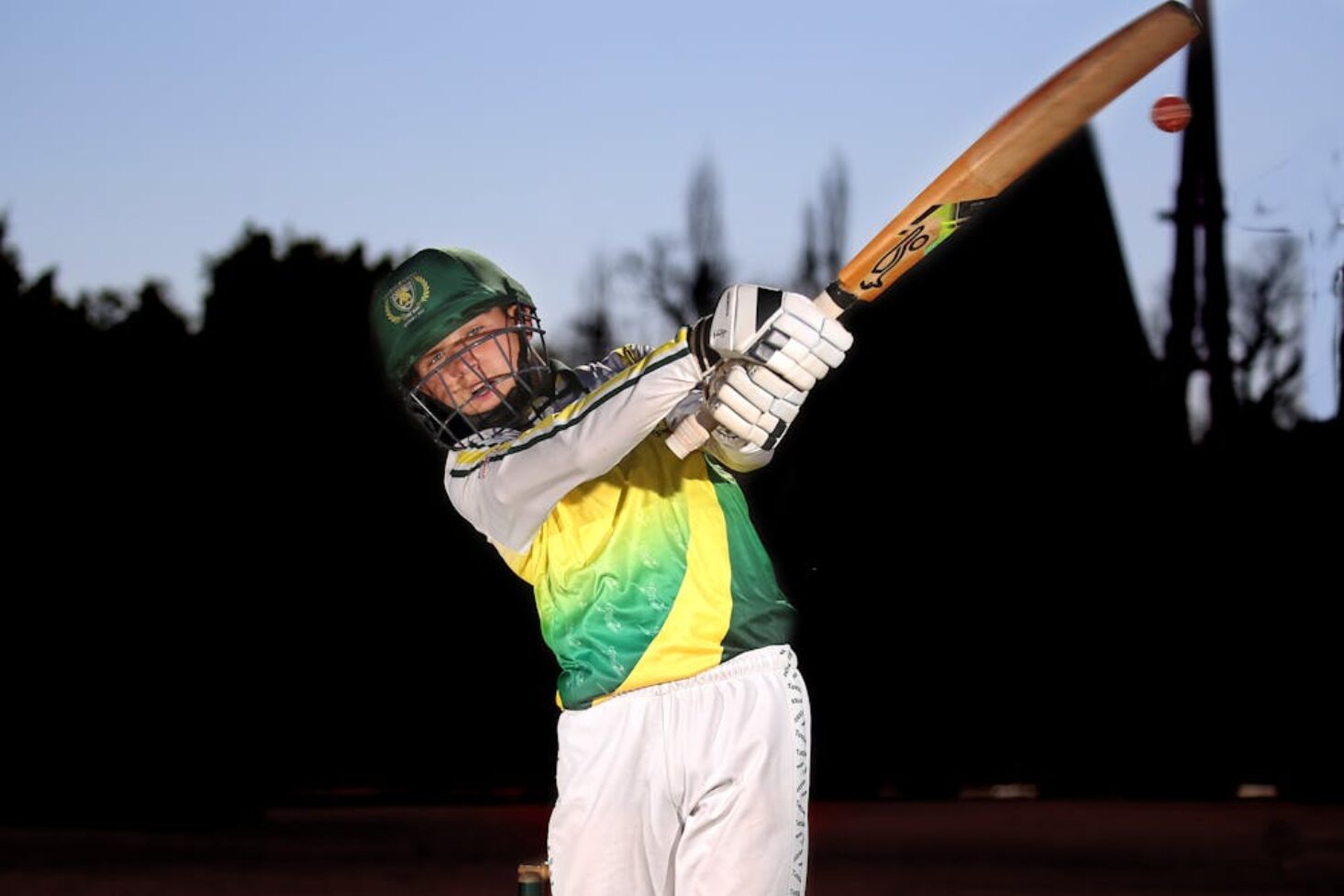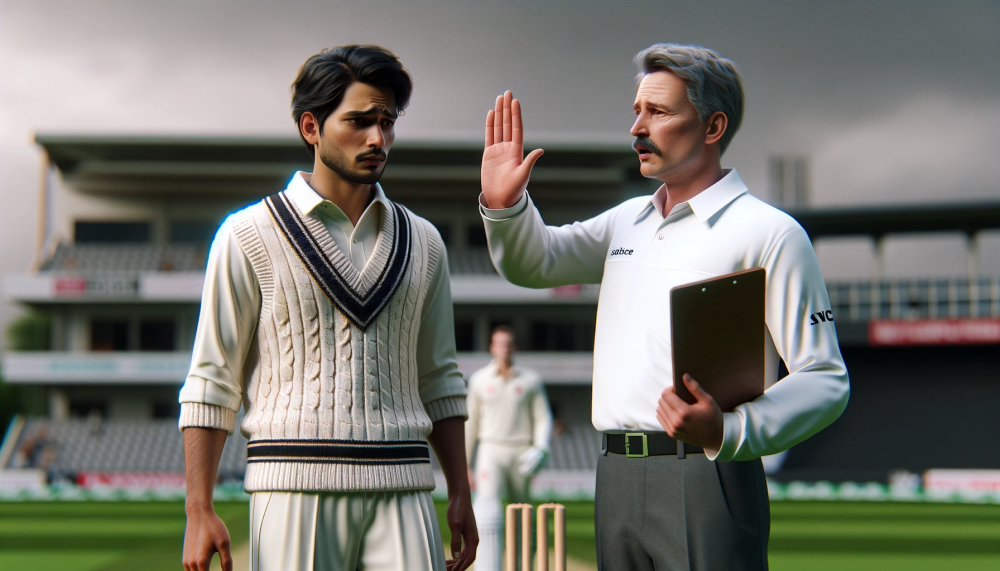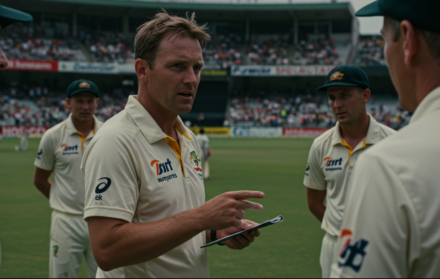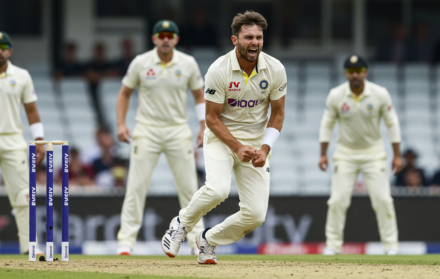
What Are The Key Bowling Rules Every Cricket Player Should Know
As cricket enthusiasts and players step onto the field, a comprehensive understanding of the game’s rules is not just beneficial but essential. Cricket, with its rich history and intricate gameplay, follows a set of regulations that govern every aspect of the match.
Whether you’re a seasoned player or a newcomer to the sport, grasping the key bowling rules is fundamental to participating in and appreciating the game. In this exploration of cricket’s bowling intricacies, we delve into the rules that shape the bowling facet of the game and contribute to the strategic dance between bowler and batsman.
To comprehend the current bowling rules, it’s valuable to trace the history and evolution of cricket. Understanding the roots of the sport provides context to the rules in place today and sheds light on how the game has transformed over centuries.
Cricket’s journey from its early origins to its present-day format is a narrative that enhances the appreciation for the rules that guide the actions on the field.
Cricket extends beyond a mere sporting activity; it is a platform for personal growth and team cohesion. Explore how the game contributes to building confidence and self-esteem through cricket. As players engage with the sport, the rules not only dictate the gameplay but also serve as a framework for personal and collective development.
Cricket becomes a powerful tool for instilling confidence and fostering a sense of achievement among its participants.
At its core, cricket is the epitome of a team-building activity. Delve into the dynamics of cricket as the perfect team-building activity, where adherence to rules becomes the foundation for collaboration and shared goals.
The bowling rules, in particular, play a crucial role in shaping the team’s strategy and orchestrating the collective effort required to outwit the opposing side.
Understanding the intricacies of cricket rules and scoring is paramount for any player looking to make a significant impact on the game. Bowling, with its specific set of rules governing deliveries, field placements, and dismissals, becomes a nuanced aspect that requires a meticulous grasp of the regulations.
This resource serves as a guide to navigating the rulebook, ensuring that every player is well-versed in the essentials of the game.
For young players aspiring to hone their cricketing skills, exploring cricket skills and drills for young players becomes an invaluable resource. The rules associated with bowling form the basis for skill development, and this resource offers practical insights into drills that aid in mastering the art of bowling.
From perfecting the run-up to refining delivery techniques, each drill is designed to enhance a young player’s bowling prowess.
As players progress through different age groups, the cricket skills progression for different age groups becomes a guiding principle. The evolution of skills aligns with the players’ growth, and the rules governing bowling adapt to match the players’ increasing proficiency.
This progression underscores the dynamic nature of the game and the continuous refinement of skills as players advance in their cricketing journey.
The key bowling rules in cricket are not merely regulations to follow; they are the threads that weave the intricate fabric of the game. From understanding the historical context to embracing cricket as a tool for personal development and team unity, the bowling rules encapsulate the essence of this beloved sport.
As we embark on this exploration of cricket’s bowling intricacies, let us unravel the rules that define the art of bowling and contribute to the timeless allure of the game.
What Is Bowling in Cricket?
Bowling in cricket is a fundamental aspect of the game. It refers to the action of delivering the ball towards the batsman. The bowler aims to dismiss the batsman by hitting the wickets or inducing a mistake. There are several types of bowling techniques in cricket, including fast bowling, spin bowling, and swing bowling.
Each technique requires skill, precision, and strategy. Bowlers must adhere to specific rules, such as not overstepping the crease and avoiding dangerous deliveries.
Understanding the intricacies of bowling is crucial for a cricket player, as it allows them to contribute effectively to their team’s success.
So, next time you watch a cricket match, observe the bowlers’ techniques and appreciate their role in the game.
Basic Bowling Rules in Cricket
Bowling in cricket is an art that requires precision and knowledge of the rules. In this section, we’ll dive into the basic bowling rules that every cricket player should know.
From understanding what constitutes a legal delivery to identifying the repercussions of a no-ball or a wide ball, we’ll explore the key aspects of bowling in cricket.
So, lace up your bowling shoes, grab your cricket ball, and let’s uncover the fundamental rules that govern this exciting aspect of the game.
Legal Delivery
A legal delivery is an essential aspect of bowling in cricket. It refers to the correct method of delivering the ball to the batsman. Here is a table outlining the key requirements for a legal delivery:
1. Arm Position: The bowler’s arm must be straight during the legal delivery stride, without flexing or bending. 2. Front Foot: The bowler’s front foot should land behind the bowling crease without crossing it during the legal delivery. 3. Side-on Action: Bowlers typically have a side-on action for a legal delivery, with their chest and hips aligned towards the batsman. 4. No-ball Line: The bowler must deliver the ball from behind the popping crease, without overstepping it, for a legal delivery. 5. Front Foot: Contact The bowler’s front foot must make contact with the ground before releasing the ball for a legal delivery.
Pro-Tip: Mastering the legal delivery is crucial for maintaining accuracy and preventing no-ball penalties. Practice proper technique and seek guidance from experienced coaches to improve your bowling skills.
No-Ball
A no-ball is a type of bowling infraction in cricket that results in the batting team being awarded an extra run. It is called a “no-ball” because the delivery is considered illegal and does not count as a legitimate ball. Here are the key details about no-balls in cricket:
- No-Ball: The ball is delivered in an illegal manner, resulting in an extra run.
- Causes: Some common causes of no-balls include the bowler overstepping the crease, having an improper front foot placement, or delivering the ball above waist height.
- Penalties: In addition to the extra run, a no-ball may also result in a “free hit” for the batsman. This means that the batsman cannot be dismissed except by getting out run out.
To avoid bowling a no-ball, bowlers must ensure they adhere to the delivery rules and maintain proper foot placement. It is important for both bowlers and umpires to be aware of the rules surrounding no-balls to ensure fair play in the game.
Understanding the concept of no-balls in cricket is crucial for both bowlers and batsmen. By avoiding such bowling infractions, players can contribute to a fair and enjoyable cricket match.
Wide Ball
The concept of a wide ball is crucial in the game of cricket bowling. It occurs when the ball is delivered outside the line of the stumps, too wide of the batsman. The umpire signals this delivery, resulting in an extra run for the batting team and the ball being re-bowled.
The wide ball rule is essential to maintain fairness and balance in the game. Bowlers must grasp the parameters of a wide ball and focus on their accuracy to prevent giving away unnecessary runs.
By developing control and precision in their deliveries, bowlers can reduce the number of wide balls and enhance their overall performance.
Essential Techniques and Skills for Bowling in Cricket
Bowling in cricket requires mastering a set of essential techniques and skills to excel on the field. In this section, we’ll dive into the world of bowling, exploring the intricacies of grip and delivery, as well as the varying bowling actions.
Whether you’re a seasoned bowler or a beginner looking to improve your game, we’ll uncover key insights and tips to enhance your bowling prowess. Get ready to unleash your bowling potential and take your cricket skills to new heights.
Grip and Delivery
To bowl effectively in cricket, it is essential to master the grip and delivery technique. Here are the steps to achieve a proper grip and delivery:
- Hold the ball with your dominant hand, ensuring a comfortable and firm grip.
- Place the index and middle fingers across the seam of the ball to gain control of the grip and delivery.
- Use the thumb and ring finger to support the ball from the bottom, improving the grip and delivery.
- As you approach the delivery stride, keep the wrist cocked and the arm close to the body to enhance the grip and delivery.
- Utilize a smooth and controlled arm motion to release the ball effectively in the grip and delivery process.
- Follow through with the arm, extending it towards the target after the grip and delivery.
By mastering the grip and delivery, bowlers can effectively deliver the ball and increase their chances of success on the cricket field.
Bowling Actions
Bowling actions in cricket play a crucial role in determining a bowler’s success as they directly affect the speed, accuracy, and movement of the ball. These actions can vary depending on the type of bowler and the specific delivery they are targeting. Let’s take a look at some key bowling actions commonly used in the game of cricket:
- Front-on action: In this approach, the bowler directly faces the wicket with their chest towards the batsman.
- Side-on action: Here, the bowler approaches the wicket from the side, with their shoulder and hip facing the batsman.
- Angled run-up: This action involves the bowler running towards the wicket at an angle, which naturally causes the ball to deviate.
- Gather and leap: Prior to releasing the ball, the bowler executes a small hop, generating additional power and bounce.
- Wrist position variations: Bowlers have the ability to use different wrist positions, such as leg spin, off-spin, and wrist spin, to put spin on the ball.
The choice of bowling action relies on factors such as the bowler’s innate abilities, skill set, and the desired type of ball they aim to produce.
Strategies and Tactics for Effective Bowling in Cricket

When it comes to effective bowling in cricket, mastering the right strategies and tactics is key. In this section, we’ll dive into the art of bowling by exploring three essential components: line and length, swing and seam, and spin bowling.
Get ready to discover the techniques and skills needed to outmaneuver batsmen and take wickets.
So, whether you’re a seasoned bowler or new to the game, this section has got you covered with all the insights you need to elevate your bowling game.
Line and Length
In cricket, one of the key factors for effective bowling is the ability to maintain the right line and length while delivering the ball. The line and length, which refer to the direction and distance the ball reaches the batsman, are crucial in putting pressure on the batsman and increasing the chances of taking wickets.
Bowlers need to consistently hit the right areas outside the off-stump or around the off-stump to create uncertainty for the batsman. By varying the line and length, bowlers can challenge the batsman’s technique and force mistakes.
To improve their line and length, bowlers can practice aiming at different spots on the pitch and analyzing their deliveries. By mastering the line and length, bowlers can become a valuable asset to their cricket team.
Swing and Seam
Swing and seam are crucial techniques in bowling in cricket. The ball moves laterally in the air, either towards or away from the batsman, due to the smooth side of the ball being polished.
The ball deviates unpredictably off the pitch due to the raised stitching on one side. Bowlers use various grip techniques to maximize seam movement.
Effective swing and seam bowling can create difficulties for batsmen and provide wicket-taking opportunities. Skilled bowlers can combine swing and seam with other factors like pace and line-length to maximize their success.
Spin Bowling
Spin bowling is a crucial skill in cricket that involves rotating the ball to create unpredictable movement. Here are some key elements of spin bowling:
- Grip and Delivery: Spinners use various grips like the leg spin grip or off spin grip to impart spin on the ball.
- Bowling Actions: Spinners have different bowling actions, such as the wrist spin action or finger spin action, which influence the trajectory and spin of the ball.
- Varieties of Spin Bowling: Spinners can deliver different types of spin, including leg spin, off spin, and left-arm orthodox spin.
- Flight and Loop: Spinners often give the ball flight and loop it in the air to tempt the batsman into making mistakes.
Shane Warne, one of the greatest spin bowlers, famously bowled a “Ball of the Century” in 1993, which spun sharply to dismiss Mike Gatting. His exceptional spin bowling skills made him a nightmare for batsmen.
Common Fouls and Violations in Bowling

Unraveling the world of common fouls and violations in bowling, we uncover a treasure trove of insights that every cricket player should know.
From foot faults to overstepping the crease, and the controversial act of throwing or chucking, we dive into the nitty-gritty of these rules that shape the dynamics of the game.
Get ready for a rollercoaster ride through the dos and don’ts on the bowling alley, backed by undeniable facts and stats. Lace-up your bowling shoes, and let’s embark on this rule-packed adventure!
Foot Faults
In cricket bowling, foot faults occur when a bowler illegally crosses the popping crease with their front foot before releasing the ball. Such foot faults result in a no-ball being called by the umpire. To avoid this, bowlers must ensure that their front foot lands behind the popping crease during the delivery stride.
Maintaining a proper balance and follow-through without overstepping is crucial for bowling technique.
Bowlers should regularly practice their run-up and delivery to prevent foot faults and enhance their effectiveness on the field.
Overstepping the Crease
Overstepping the crease is a common foul in cricket bowling. It occurs when the bowler’s front foot lands beyond the popping crease while delivering the ball.
This results in a no-ball and gives the batting team an extra run. To avoid overstepping the crease, bowlers must maintain proper foot placement and ensure their front foot doesn’t cross the line.
Practicing a smooth and controlled run-up can help bowlers improve their footwork and avoid this violation. By staying mindful of their foot position, bowlers can enhance their accuracy and contribute to a successful bowling performance.
Remember to focus on technique and maintain a consistent line and length. Keep practicing to refine your skills and become a more effective bowler.
Throwing or Chucking
Throwing or chucking is a violation in the sport of cricket. It refers to the action of a bowler straightening their bowling arm beyond the allowed limit during the delivery. This action gives the bowler an unfair advantage as it increases the speed and effectiveness of the ball.
The process of monitoring and penalizing throwing or chucking involves on-field umpires and, in some cases, video analysis. Throwing or chucking refers to the illegal action of a bowler straightening their bowling arm beyond the allowed limit during the delivery, which gives them an unfair advantage.
The rules regarding throwing or chucking aim to ensure fairness in the game by maintaining the integrity of the delivery and preventing any bowler from gaining an unfair advantage.
Fielding Positions for Bowlers in Cricket
Fielding positions for bowlers in cricket play a crucial role in the game’s strategy. These fielding positions are strategically placed across the field to optimize the chances of taking wickets.
Understanding these fielding positions is vital for bowlers to devise effective plans and get desired results on the cricket field. Here are some key fielding positions for bowlers in cricket:
1. Slip: Positioned behind the wicketkeeper, slips are used to catch edges of the ball. 2. Gully: Located beside the slips, gully fielders are responsible for catching balls that are hit towards the slips. 3. Point: Positioned near the off-side, the point fielder tries to stop quick singles and takes catches. 4. Mid-off: Placed between the bowler and the batsman, mid-off prevents straight shots and runs out batsmen. 5. Mid-on: Similar to mid-off but on the leg side, the mid-on fielder restricts shots on that side and executes run-outs. 6. Fine leg: Positioned behind the square leg umpire, the fine leg fielder tries to stop runs on the leg side.
Bowling Rules for Different Formats of Cricket
Understanding the bowling rules for different formats of cricket is crucial for every player. Whether it’s Test matches, One Day Internationals (ODIs), or T20 Internationals, knowing the specific guidelines is essential.
- Test Matches: In Test matches, bowlers have the freedom to bowl any number of overs they desire in a day’s play.
- One Day Internationals (ODIs): In ODIs, bowlers are limited to bowling a maximum of 10 overs in each match.
- T20 Internationals: In T20Is, bowlers can only bowl a maximum of 4 overs in a single match.
- No Balls and Wides: It is crucial to avoid bowling a no ball as it results in an additional run for the opposing team. On the other hand, wides are given when the ball is out of the batsman’s reach.
- Fielding Restrictions: Limited-overs matches introduce restrictions on the number of fielders permitted outside the inner circle during the powerplay.
Frequently Asked Questions
What are the key bowling rules every cricket player should know?
In cricket, bowling is the act of propelling the ball towards the wicket defended by a batter, while throwing is not allowed as it goes against the strict biomechanical definition that restricts the angle of extension of the elbow.
What are the basic equipment required for bowling in cricket?
A cricket bowler requires basic equipment such as a ball, bowling shoes, protective gear (helmet, pads, gloves), and a low stool called the wicket gate.
What are the different types of bowlers in cricket?
Cricket has different types of bowlers, including fast bowlers who rely on pace, swing and seam bowlers who make the ball deviate in the air or when it bounces, and slow bowlers who use flight and spin to deceive the batter.
What are the objectives of a bowler in cricket?
The objective of a bowler is to get the batsman out and prevent him from scoring runs. Bowlers need to have command over length, direction, and the ability to vary the ball’s rotation, swerve, and pace to trouble the batsman.
What are the key rules and tactics for placing fielders in cricket?
The captain of the fielding side aims to place fielders strategically to dismiss the batsmen and prevent scoring runs. The disposition of the field depends on various factors such as the bowler’s technique, pitch conditions, game state, and captain’s tactics. In one-day cricket, there are restrictions on the placement of fielders.
What are some illegal bowling actions in cricket?
Cricket has strict laws governing how a ball must be bowled. If a bowler bends the elbow excessively or throws the ball illegally, it is ruled a no-ball. Additionally, if a ball is bowled too wide for the batsman to play at it, it is ruled a wide. These actions are considered illegal and result in penalties for the bowler.





